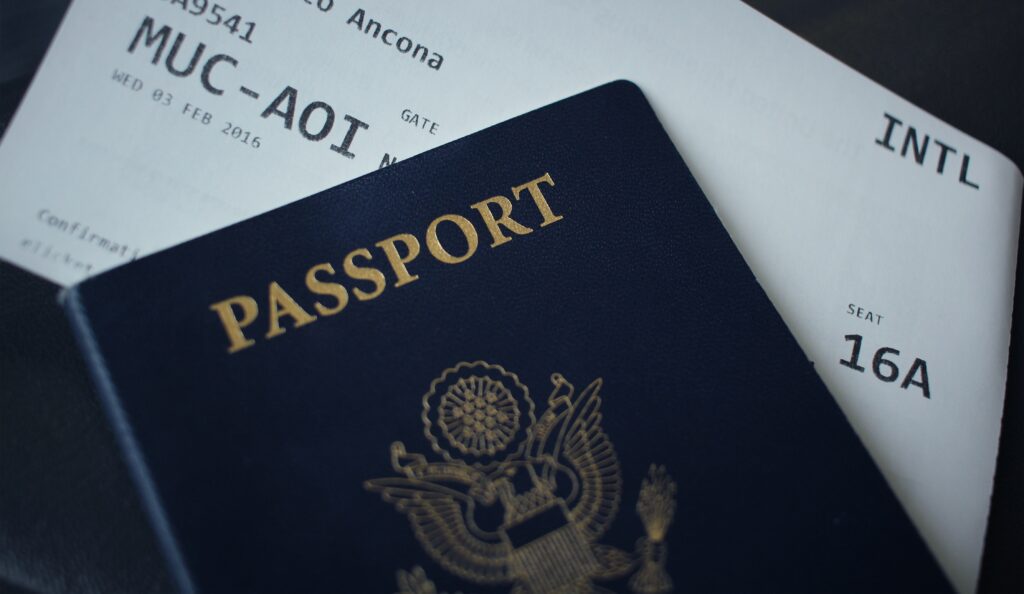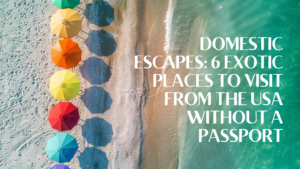
Some of the articles on Casa Diem Life may contain affiliate links. If you click and make a purchase, I might earn a small commission at no extra cost to you. It's just one way we keep the journey going! Find out more in my Privacy Policy.
Before 2020, you may not have checked any medical bulletins before booking a vacation. I mean, who wants to think about vaccinations when dreaming of Mai Tais, sunsets, and long walks on the beach? No one, that’s who. But preparations like this are such an essential part of making sure your trip is remembered for the right reasons. As exciting as it is to think about walking new paths, vacations can quickly become stressful if you don’t plan and prepare ahead of time. I’ve highlighted some safety habits that my family has adopted to ease some of the tension of international travel.

1. Make A Plan for Your Personal Health.
Check your travel dates against your prescription refill dates to see if you are likely to run out of your medication while out of the country. Have a chat with your doctor to see what arrangements can be made. For most medications, it may be as simple as getting an advance on some of the next month’s prescriptions.
Some countries are notoriously strict about the transport of medication, so I recommend traveling with a copy of your prescriptions, or with your clearly labeled medication bottles. As handy as those adorable pillboxes are, it may be better to carry the extra weight of your prescription bottles than to forfeit your medication at the airport.
If you are traveling with a chronic illness or might need some extra assistance, be sure to communicate this to your airline, hotels, and doctors.
I also highly recommend carrying a medical summary card in your wallet, in case the unthinkable happens are you are not able to communicate effectively. This can be as simple as a laminated notecard with your name, age, allergies, current medications, major underlying illness(es), and emergency contacts.
And, of course, there’s travel insurance, which deserves its own blog post because the benefits and considerations are many. You’ll just have to subscribe to the blog to ensure you don’t miss that info. *wink*
2. Make an Emergency Communication Plan.
Before you go, at least two people should have your flight information and your hotel address and phone number. Designate one of these people as a check-in buddy. This person should expect to hear from you at agreed-upon intervals. For me, it’s my mom, and she needs to hear from me twice a day to be sure I’m safe. Because she’s a mom and that’s how mom’s roll. If you’re checking in with a friend or neighbor, decide what feels right for both of you. It should be more than once during the span of your trip, though.
Make it easy to stay in constant contact with your home base. Purchase a hotspot, travel Wi-Fi, and/or an international calling plan. Also, consider buying a local SIM card as soon as you arrive at your destination. Download apps that allow you to seamlessly communicate internationally, like WhatsApp and Signal.
This doesn’t mean you don’t get to unplug and enjoy some quiet time away. It just ensures that when you do need to check in, there are no obstacles in your way.

3. Automate as Much as Possible.
This subsection may contain affiliate links, meaning that if you make a purchase through one of these links, I would get a small commission at no extra cost to you.
For anyone paying attention, it is easy to tell when someone isn’t home or sticking to their routines. Packages stacked at the door, uncut grass, porch lights that never come on or off… all of these are clues that your home is unguarded.
For longer trips, contact your post office to suspend deliveries to your home for a specified period. If you’re a chronic online shopper (stop it), make sure your deliveries are scheduled for the week before you leave or after you get back. If purchases have already been made, speak to a friend or neighbor about picking up your packages regularly. It helps to send them a text message on the days when you get a delivery notification.
Install smart lights throughout your house. Consider porchlights that can be programmed to turn on and off at sunset and sunrise. Amazon’s Alexa has a Guard feature which, when integrated with your smart switches, can turn your lights on and off intermittently, to make it seem that someone is home.
Upgrade your home security system to something that can be monitored remotely. A lot of companies have owner portals that allow you to turn your alarms on, unlock doors, view the camera footage, and notify authorities from across the globe. As a bonus, with one of these systems installed, you can let your friend or neighbor into the house when they stop by to pick up your packages. Just remind them not to stack the boxes in view of the front doors or windows!
Preschedule your social media posts. If you maintain an online presence for business or personal reasons, don’t let them know your travel dates and locations. You don’t want any superfans coming to find you or paying your home a visit. With pre-scheduled content, you can maintain your presence while enjoying your time away!
Finally, do not set an out-of-office notification for your personal email address. Why is this even a thing?

4. Make a Transportation Plan.
Nothing makes you more vulnerable than being stranded in an unfamiliar place. With emotions high, decision-making is impaired, and unfortunately, transit points are a place where people are often taken advantage of.
Planning ahead allows you to secure transportation options that fit your needs, especially during peak travel seasons or in popular tourist destinations. It reduces the risk of last-minute unavailability or long waiting times, which can be stressful and disrupt your travel plans.
Choosing reputable transportation providers, whether it’s airlines, taxi services, or private transfers, allows you to have peace of mind in terms of reliability, driver expertise, and adherence to safety regulations. It minimizes the risk of encountering unlicensed or unsafe transportation options.
5. Check Travel Advisories.
Researching the safety of your destination is an important step in preparing for your trip. Sometimes it is important to look beyond news coverage and check in with people who live locally. If time is an issue, make sure to check at least two of the 5 places listed below to get up-to-date information on what’s going on where you’re headed.
1. The U.S. Department of State provides travel advisories and alerts for countries around the world.
2. The Centers for Disease Control and Prevention (CDC) provides information on health risks and disease outbreaks in various countries.
3. Local news sources can provide up-to-date information on current events and safety concerns in your destination country.
4. Online forums and social media groups can provide insights and advice from other travelers who have visited your destination country.
5. Travel blogs and websites can provide insights and tips from experienced travelers who have visited your destination country. You can search for relevant blogs and websites on platforms such as Google and Pinterest. Just be sure to check the dates of the articles you are referencing for relevance.

6. Enroll in the Smart Traveler Enrollment Program
If you are a U.S. citizen traveling abroad, it is recommended that you enroll in the Smart Traveler Enrollment Program (STEP) offered by the U.S. Department of State. This free service allows U.S. citizens and nationals traveling and living abroad to register their trip with the nearest U.S. Embassy or Consulate.
To enroll in STEP, you can visit the program’s official website to create an account and input your destination, travel dates, and contact information. Enrolling in STEP allows the U.S. government to communicate with you in case of an emergency, such as a natural disaster, civil unrest, or a family emergency.
In addition to enrolling in STEP, it is also important to carry copies of your travel documents, such as your passport and travel itinerary, and to leave a copy with a trusted family member or friend back home. This can help ensure that you have access to important information in case of an emergency.
7. Connect with travel groups
Everything’s been so serious up until this point. Here’s a FUN safety habit you can adopt: join a trusted network of like-minded travelers and start to build relationships. There are vetted groups of travel creators, LGBTQ+ travelers, plus-sized adventurers, food connoisseurs, and local guides that would be happy to host and welcome you to their city.
You don’t need to stay with them (unless that’s your thing), but wouldn’t it be nice to meet up with a friendly face for coffee, in even the most remote parts of the world? And you get to see a new place through the eyes of a local. Win!
Leave a comment below and let me know if you’ve already adopted any of these safety habits.
What’s Coming Next?
I’m just back from a quick solo trip to Austin, and I fell in love with it all over again. I got my undergraduate degree from UT Austin but I haven’t really spent much time there since I graduated, for shame. I’m inspired to take a longer trip out there with the whole family, but until then I’ll work on an article about how I spent my time.
Wander Often,



Hi, I'm Chioma Ikoku, a spirited explorer and a peace-loving homebody. I founded Casa Diem Life to help you combine the excitement of travel with the comfort of home, because I believe that adventure begins at home.
Want to read more?
Receive the latest posts, exclusive content, and special offers right in your inbox.
Explore the ways we can work together on the resources page









